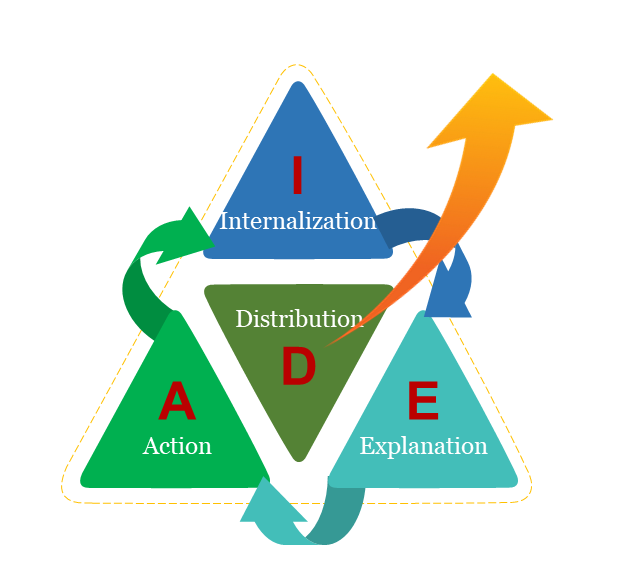Professors of Strategic Communication Dr. Deanna D. Sellnow and Dr. Timothy L. Sellnow explore strategic risk and crisis communication using the IDEA Model, a theoretically grounded tool for effective communication
Nearly four decades have gone by since Beck (1986) proclaimed the world as a “global risk society” comprised of multiple ever-present and interacting risks (e.g., ecological, financial, military, terrorist, biochemical, informational). Helsloot and colleagues (2012) argued further that these ever-heightening global risks have created “a new class of adversity” they describe as “mega-crises” that “defy boundaries, limits, neat demarcations, patterned connections and linear consequences” (p. 5). Ultimately, the reality of mega-risks and mega-crises “challenge traditional assumptions and working methods of public authorities, corporate leaders and the public at large” (p. 5), necessitating a need for enhanced risk and crisis communication.
Today, we understand from first-hand experience what these scholars were prophesying. Throughout the COVID-19 pandemic, for example, we endured a multiplicity of global risks and cascading mega-crises that transcend the boundaries of both time and space. Unfortunately, we also watched in dismay as spokespersons struggled to communicate effectively about (a) a plethora of unknowns regarding the numerous risks inherent in this unprecedented and ongoing crisis and (b) the series of secondary crises spurred by it.
As the pandemic waned on, what became painstakingly clear is the gap between research and practice when communicating about global risks and mega-crises. Our experiences during the pandemic strengthened our resolve to bridge that gap.
The IDEA Model: from risk perception to protective action
The IDEA model theoretical framework has demonstrated, through multiple data-driven research experiments, its utility to enhance learning about hazards and to persuade those at risk to comply with recommended protective action (e.g., Johansson et al., 2021; Sellnow et al., 2017 Sellnow & Sellnow, in press). It is an easily applied communication tool for reducing risks, mitigating harms, and ultimately saving lives (Sellnow & Sellnow, 2018).
The IDEA model is an easy-to-remember, understand, and employ framework for effective strategic risk and crisis communication grounded in experiential learning theory (Dewey, 1938; Kolb & Kolb, 2017).
Effective strategic communication can then be measured by affective, cognitive, and behavioral learning outcome achievement. That is, receivers must (a) pay attention to the messages because they perceive the source as trustworthy and the topic as relevant (affective learning), (b) understand accurately the nature of the crisis and inherent risks embedded in it (cognitive learning), and (c) engage in actions recommended to reduce risk and mitigate harms (behavioral learning) (Biggs, 2011).
IDEA is an acronym representing each of the the model’s four elements.
The “I” in IDEA stands for internalization
The adage that people don’t care how much you know until they know how much you care is at the crux of internalization. To be successful, spokespersons first must be perceived as competent, credible, and trustworthy. Only then will people be motivated to learn about potential threats and impacts of
the situation and events. Spokespersons can motivate people to pay attention by:
- Authentically showing compassion and empathy for those impacted by the risk or crisis.
- Sincerely hearing the stories and honoring the lived experiences of those impacted as important.
- Highlighting potential threats and impacts regarding, for example, physical and mental health, resources, finances, and reputation.

The “D” in IDEA stands for distribution
Some important communication channel considerations are (a) access to the channels being used to communicate, (b) information-seeking channel preferences, and (c) managing the narrative. Not everyone has access to the same channels, nor do they go to the same channels to learn about risks and crises. Moreover, some channels may be guilty of spreading mis-, dis-, and mal-information, which can mislead people about potential threats and recommended actions. For these reasons, spokespersons should:
- Communicate early and often over a variety of communication channels.
- Establish relationships with social media influencers that can help communicate accurately with their followers.
- Respond regularly to mis-, dis-, and mal-information that arises in a timely manner.
The “E” in IDEA Model stands for explanation
Critical to effective strategic communication about risks and crises are (a) accuracy, (b) transparency, and (c) intelligibility in terms of what is happening and why, what are the risks and to whom, and what is being done to manage them. Spokespersons can address explanation by:
- Describing situations and events accurately and regularly.
- Sharing both what is known and not yet known (and the processes in place to learn more).
- Translating explanations to be intelligible across languages and literacy levels.
The “A” in IDEA stands for action
Regarding action, effective strategic risk and crisis communicators avoid ambiguity and foster efficacy. People must believe they can – and not be constrained by obstacles making it impossible to – enact the behavior. Spokespersons are advised to:
- Communicate directives regarding both what to do (or not to do) and why.
- Integrate visual and audiovisual models of desired action steps to be taken.
- Tailor actionable instructions to account for norms and values of target populations.
- Modify recommendations to account for unique lived experiences and potential barriers among diverse communities and groups.
The IDEA model theoretical framework for effective strategic risk and crisis communication has been developed and refined based on decades of research focused on a variety of risk and crisis types, in many countries, and among diverse cultures. Its utility has been demonstrated among government officials and agencies, corporate leaders, health professionals, and media journalists. It is easy to use, and its versatility makes it a fundamental communication model when communicating to reduce risks, mitigate harms, and save lives.
References
- Beck, U. (1986). Risk society: Towards a new modernity. Sage.
Biggs, J. B. (2011), Teaching for quality learning at university: What the student does. McGraw-Hill. - Dewey, J. (1938). Experience and Education. Free Press.
Helsloot, I., Boin, A., Jacobs, B., & Comfort, L. K. (Eds). (2012). Mega-crises: Understanding the prospects, nature, characteristics and the effects of cataclysmic Events. Thomas Publishing. - Kolb, A. Y., & Kolb, D. A. (2017). Experiential learning theory as a guide for experiential educators in higher
education. Experiential Learning & Teaching in Higher Education, 1(1), 7-44. - Johansson, B., Lane, D. R., Sellnow, D. D., & Sellnow, T. L. (2021). No heat, no electricity, no water, oh no!: an IDEA model experiment in instructional risk
communication. Journal of Risk Research, 24(12), 1576- 1588. - Sellnow, D. D., Lane, D. R., Sellnow, T. L., & Littlefield, R. S. (2017). The IDEA model as a best practice for effective instructional risk and crisis communication. Communication Studies, 68(5), 552-567.
- Sellnow, D. D., & Sellnow, T. L. (2019). The IDEA model for effective instructional risk and crisis communication by emergency managers and other key spokespersons. Journal of emergency management, 17(1), 67-78.
- Sellnow, T. L., & Sellnow, D. D. (in press). Before crisis: The practice of effective risk communication. Cognella.
Nicholson School of Communication and Media
Tel: +1 701 793 5196
Website

This work is licensed under Creative Commons Attribution-NonCommercial-NoDerivatives 4.0 International.


